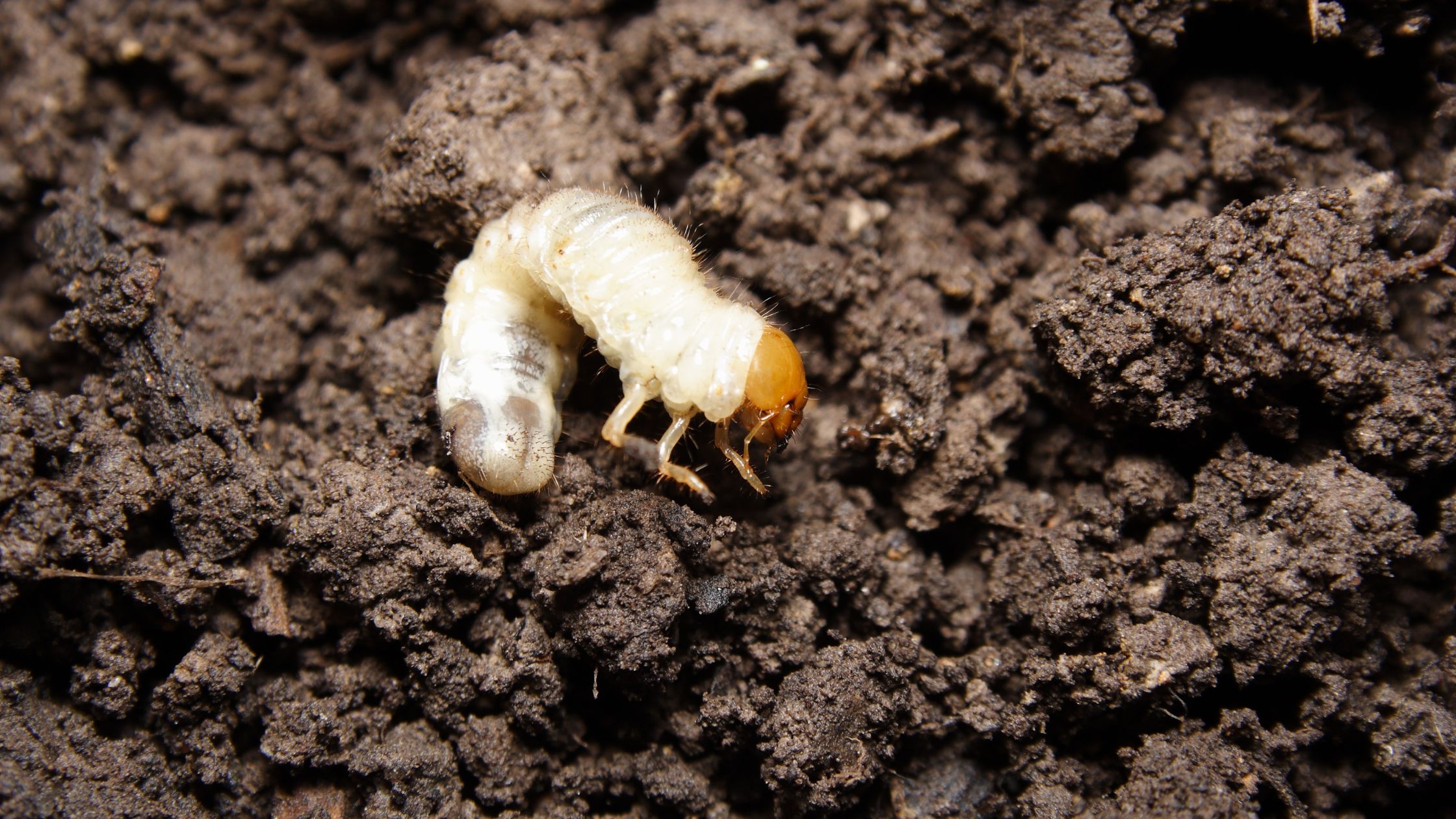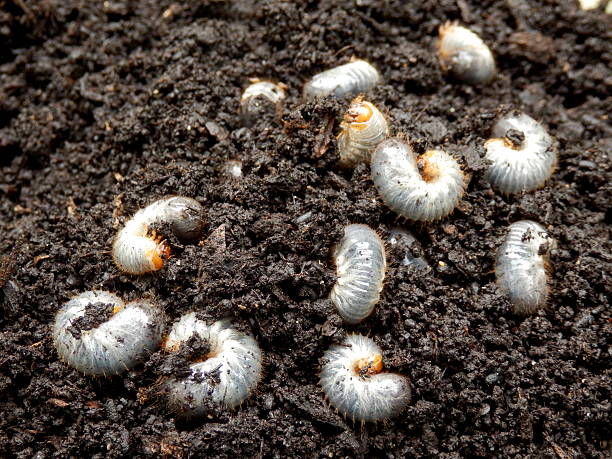Understanding Grass Grubs: The Hidden Enemy of Your Lawn
Grass grubs, often unseen, can wreak havoc on your lawn, turning lush greenery into patches of brown devastation. These pests, the larvae of various beetle species, feed on the roots of grass, causing significant damage to the health and appearance of your lawn. Understanding grass grubs is the first step in combating this hidden enemy effectively.
Grass grubs prefer the cover of soil to carry out their destructive feast, making them a challenging adversary. They are most active during warmer months, but their presence can go unnoticed until the damage is visible on the surface. The key to managing grass grub infestations lies in early detection and intervention. By recognizing the signs of their activity, such as yellowing grass, bare patches, and the presence of birds pecking at your lawn (indicating they are feeding on the grubs), you can take timely action to mitigate their impact.
Understanding the lifecycle of grass grubs is crucial for effective control. They undergo several stages – from egg to larva, pupa, and finally, adult beetle. Each stage offers a unique opportunity for intervention. For instance, targeting the larvae stage with appropriate treatments can prevent them from maturing into adult beetles, thereby breaking the cycle of infestation.
Armed with knowledge about grass grubs, their behavior, and lifecycle, you can develop a strategic approach to lawn care that includes monitoring, prevention, and treatment. This comprehensive understanding is essential for maintaining a healthy, vibrant lawn free from the destructive activities of grass grubs.
Identifying Grass Grub Infestation: Key Signs to Look Out For
Identifying a grass grub infestation early can save your lawn from significant damage. These pests, lurking beneath the surface, feast on the roots of grass, leading to unsightly patches and overall lawn deterioration. Recognizing the signs of their presence is crucial for timely intervention. One of the first indicators is the appearance of irregular, brown patches on your lawn that do not recover despite adequate watering and care. This is often because the grass grubs have damaged the roots, impairing the grass’s ability to absorb water and nutrients.
Another telltale sign is increased bird activity on your lawn. Birds, especially starlings and blackbirds, feed on grass grubs. If you notice birds pecking at your lawn more frequently, it’s a good indication that grubs are present. Similarly, the presence of mole or skunk activity can also signal an infestation, as these animals dig into the lawn to feed on the grubs.
Additionally, you might observe that the grass easily lifts from the soil with little resistance, similar to rolling up a carpet. This happens because the grubs have consumed the roots, severing the grass’s connection to the soil. A spongy feel underfoot is another symptom, indicating the underlying damage caused by the feeding grubs.
By staying vigilant and looking out for these signs, you can identify a grass grub infestation before it wreaks havoc on your lawn. Early detection is key to implementing effective grass grub treatment and lawn pest control measures, ensuring the health and beauty of your lawn are preserved.

The Lifecycle of Grass Grubs: Knowing Your Enemy
Understanding the lifecycle of grass grubs is crucial in effectively managing and eradicating them from your lawn. Grass grubs, the larval stage of the beetle commonly known as the chafer beetle, undergo a complete metamorphosis that includes four distinct stages: egg, larva, pupa, and adult. The cycle begins in late spring or early summer when adult beetles emerge from the soil to mate. After mating, the females lay their eggs in the soil of well-manicured lawns, where the conditions are ideal for the eggs to develop.
The eggs hatch into larvae, commonly referred to as grubs, within two weeks. These grubs are creamy white in color, C-shaped, and have a distinct brown head. They feed on the roots of grass and other organic matter in the soil, which can cause significant damage to your lawn. This feeding period lasts until late fall, during which the grubs grow and molt several times.
As winter approaches, the grubs dig deeper into the soil to overwinter. Come spring, they move closer to the surface again, feeding for a short period before transitioning into the pupal stage. In this stage, they transform into the adult beetles, ready to emerge from the soil and start the cycle anew.
Understanding this lifecycle is key to timing your treatment strategies effectively. For instance, targeting the grubs in late summer or early fall can disrupt their growth and reduce their population before they cause extensive damage. Knowing your enemy is the first step towards protecting your lawn from these hidden pests.
Natural Predators: Allies in the Fight Against Grass Grubs
When battling grass grub infestations, it’s essential to recognize the role of natural predators in maintaining the ecological balance of your lawn. These allies can significantly reduce grass grub populations without the need for chemical interventions. Birds, such as starlings, blackbirds, and thrushes, are among the most effective natural predators. They feed on the grubs, thereby controlling their numbers. Encouraging these birds into your garden by providing bird feeders or baths can enhance their predatory activities against grass grubs.
Another vital ally is the beneficial nematode, a type of microscopic worm that preys on grass grubs. These nematodes infiltrate the grubs’ bodies, releasing bacteria that kill the host. Applying beneficial nematodes to your lawn is a safe, natural method to combat grass grub infestations. It’s crucial, however, to ensure that you select the correct species of nematodes specifically targeting grass grubs for this treatment to be effective.
Ground beetles and parasitic wasps also play a significant role in controlling grass grub populations. Ground beetles hunt and feed on the grubs at night, while parasitic wasps lay their eggs on or near the grubs, with the hatching larvae feeding on the host grub. Encouraging these natural predators involves minimizing pesticide use, as chemicals can harm these beneficial insects as well as the pests.
By understanding and supporting the ecosystem in your lawn, you can leverage natural predators to manage grass grub populations effectively. This approach not only helps in controlling lawn pests but also promotes biodiversity and ecological health, contributing to a more resilient and vibrant lawn.

Cultural Practices: Preventing Grass Grub Infestations Naturally
Preventing grass grub infestations doesn’t always require reaching for chemical solutions. Adopting certain cultural practices can significantly reduce the likelihood of these pests taking over your lawn. One effective strategy is maintaining a healthy lawn through proper mowing, watering, and fertilization. A well-maintained lawn can withstand pest invasions better and recover more quickly if an infestation does occur.
Regular mowing, when done correctly, can discourage grass grubs. Keeping your lawn at an optimal height helps promote a strong root system, making it less inviting for female beetles to lay their eggs. However, avoid cutting the grass too short, as this can stress the lawn and make it more susceptible to pests.
Watering your lawn deeply but infrequently encourages deeper root growth, which can help your lawn resist the stress caused by grub feeding. Overwatering, on the other hand, creates ideal conditions for grass grub development. Therefore, it’s crucial to adjust your watering schedule according to the weather and the specific needs of your lawn.
Proper fertilization plays a critical role in maintaining a healthy lawn. Use a balanced fertilizer that matches the nutritional needs of your grass type. Over-fertilizing can lead to rapid, weak growth, making the lawn more attractive to pests, including grass grubs.
Another cultural practice to consider is aeration. Aerating your lawn helps improve soil structure, allowing water, nutrients, and air to reach the root zone more effectively. This process can enhance the overall health of your lawn, making it more resilient against grass grub infestations.
By integrating these cultural practices into your lawn care routine, you can create an environment that is less appealing to grass grubs, thereby preventing infestations naturally. Remember, a healthy lawn is your best defense against lawn pests.
Chemical Solutions: Selecting the Right Insecticide for Grass Grubs
When natural and cultural methods fall short in the battle against grass grubs, turning to chemical solutions might be necessary to protect your lawn. However, it’s crucial to select the right insecticide that effectively targets grass grubs without causing undue harm to your lawn, beneficial insects, or the environment. Insecticides designed for grass grub control come in various forms, including granules, liquids, and baits. Each type has its specific application method and timing for optimal effectiveness.
Before applying any chemical treatment, it’s essential to correctly identify the presence of grass grubs and assess the level of infestation. This ensures that the use of insecticides is justified and targeted. Always read and follow the label instructions carefully to apply the product safely and effectively. Some products require watering-in after application to reach the soil where grass grubs reside, while others are designed to work on the surface.
It’s also important to consider the environmental impact of chemical treatments. Some insecticides can be harmful to non-target species, such as bees and other beneficial insects. Opting for products with a lower environmental impact and applying them responsibly can help minimize these risks. In some cases, products specifically labeled as safe for bees and other pollinators are available and should be prioritized when possible.
Timing is critical when using chemical solutions for grass grub control. The most effective time to apply insecticides is when grubs are young and actively feeding near the surface of the soil, typically in late summer to early fall. This timing helps ensure that the treatment reaches the grubs when they are most vulnerable, maximizing the effectiveness of the insecticide and reducing the need for repeat applications.

Organic Treatments: Safe and Effective Alternatives
When it comes to combating grass grubs in your lawn, many homeowners are turning towards organic treatments as safe and effective alternatives to chemical insecticides. These natural solutions not only target the grass grubs but also ensure the safety of your family, pets, and the beneficial organisms living in your soil. One popular organic method is the application of beneficial nematodes. These microscopic worms naturally prey on grass grubs by infecting and killing them, without harming your lawn or the environment.
Another effective organic treatment is the use of neem oil, a natural pesticide derived from the neem tree. Neem oil works by disrupting the life cycle of grass grubs, preventing them from maturing and reproducing. It’s important to apply neem oil according to the product instructions, usually during the early stages of grass grub infestation for the best results.
Milky spore is also a powerful organic option specifically targeting Japanese beetle larvae, one of the common types of grass grubs. The milky spore disease infects and kills these grubs, and once established in your lawn, can provide protection for many years. Application of milky spore powder is typically done using a drop spreader to ensure even coverage across your lawn.
Incorporating organic matter into your soil can also help suppress grass grub populations by improving the overall health of your lawn. Healthy, well-aerated soil encourages the growth of beneficial microorganisms that naturally control grass grub numbers. Composting and mulching are excellent ways to add organic matter to your lawn, enhancing its resilience against pests like grass grubs.
By choosing organic treatments for grass grub control, you’re not only addressing the immediate problem but also contributing to the long-term health and sustainability of your lawn ecosystem. Remember, the key to successful grass grub management is early detection and consistent application of your chosen treatment method.
Timing Is Everything: When to Treat Your Lawn for Grass Grubs
Understanding the optimal time to treat your lawn for grass grubs is crucial in effectively managing these lawn pests. The lifecycle of grass grubs plays a significant role in determining the best treatment period. Generally, early spring and late summer are key times for grass grub treatment. In early spring, grass grubs are in their larval stage, feeding voraciously on the roots of your lawn, which makes them more susceptible to treatments. Applying a suitable insecticide or organic treatment during this time can significantly reduce the grub population, preventing further damage to your lawn.
Late summer or early fall is another critical period for grass grub control. This is when adult beetles lay their eggs in the soil of your lawn. Treating your lawn during this period can prevent the newly hatched grubs from surviving the winter, thereby reducing the population that emerges the following spring. It’s important to note that the effectiveness of treatment during these periods can vary depending on your geographical location and the specific species of grass grub infesting your lawn.
Additionally, monitoring your lawn for signs of grass grub activity can help in timing your treatments more precisely. Signs such as brown patches, increased bird activity, and easily uprooted grass indicate active infestations. Implementing treatments shortly after noticing these signs can enhance the effectiveness of your grass grub control efforts.
In conclusion, timing your grass grub treatments in alignment with their lifecycle and monitoring your lawn for infestation signs are key strategies in effectively managing grass grub populations. By doing so, you can maintain a healthy, vibrant lawn free from the destructive impact of grass grubs.
Recovery Tips: Reviving Your Lawn After a Grass Grub Attack
Reviving your lawn after a grass grub attack requires patience and a strategic approach. The damage caused by grass grubs can be disheartening, but with the right recovery tips, your lawn can return to its lush, green state. First, assess the extent of the damage. If the grass is dead, you’ll need to remove it and prepare the soil for reseeding or sodding. Aerate the soil to improve oxygen, water, and nutrient flow. This step is crucial for promoting healthy root growth of new grass.
Choose a high-quality grass seed or sod that is appropriate for your climate and soil type. Applying a starter fertilizer can provide essential nutrients that encourage seedling growth. Watering is critical during this phase; keep the soil consistently moist but not waterlogged to support germination and establishment.
In areas where grass grubs have caused minimal damage, promoting the health of the existing lawn can encourage recovery. Regular watering, proper fertilization, and mowing at the recommended height for your grass type can improve the lawn’s resilience against pests and diseases. Introducing beneficial nematodes or applying organic treatments can also help control any remaining grass grubs without harming your recovering lawn.
Monitoring your lawn for signs of new or ongoing grass grub activity is essential. Early detection and intervention can prevent future outbreaks and reduce the need for extensive recovery efforts. By following these recovery tips and maintaining good lawn care practices, you can restore your lawn’s vitality and protect it from future grass grub attacks.
Prevention Strategies: Keeping Grass Grubs at Bay for Good
Preventing grass grub infestations is crucial for maintaining a healthy and vibrant lawn. By implementing a combination of cultural practices, natural solutions, and timely interventions, you can create an environment that is less inviting to grass grubs. One effective strategy is to maintain proper lawn care. Regular mowing, watering, and fertilizing can strengthen your lawn, making it more resilient to pest invasions. However, it’s important to avoid overwatering and overfertilizing, as these conditions can favor grass grub development.
Introducing natural predators into your garden is another powerful prevention method. Birds, nematodes, and certain beetle species are known to feed on grass grubs and can help keep their population in check. Creating a welcoming habitat for these predators can enhance your lawn’s defense system against grass grubs.
Monitoring your lawn for early signs of grass grub activity is also essential. This includes keeping an eye out for irregular brown patches or increased bird activity, as birds may be feeding on the grubs. Early detection allows for timely intervention, preventing the grubs from causing significant damage.
Lastly, consider applying a preventive grub control product in late summer or early fall. This is when female beetles lay their eggs, and applying a treatment during this time can prevent the eggs from hatching or kill the young larvae upon emergence. Opt for products that are specifically labeled for grass grub control and follow the application instructions carefully to ensure effectiveness and minimize harm to beneficial organisms.
By adopting these prevention strategies, you can protect your lawn from grass grub infestations and enjoy a lush, healthy outdoor space for years to come.
